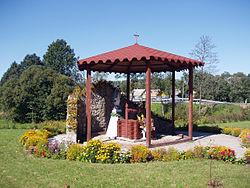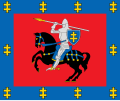Kena | |
|---|---|
Village | |
 Well near the church | |
| Coordinates: 54°39′N25°38′E / 54.650°N 25.633°E | |
| Country | |
| County | Vilnius County |
| Municipality | Vilnius district municipality |
| Eldership | Rukainiai eldership |
| Population (2021) | |
• Total | 369 |
| Time zone | UTC+2 (EET) |
| • Summer (DST) | UTC+3 (EEST) |


Kena is a village in Vilnius district municipality, Lithuania. It is located on the state border with Belarus and has railway customs for all passenger trains from/to Belarus and Russia, including transit trains to Kaliningrad Oblast. According to the census of 2001, Kena had 418 residents. [1] The figure shrank to 369 in 2021. Nearby Pakenė village had 204 inhabitants.

